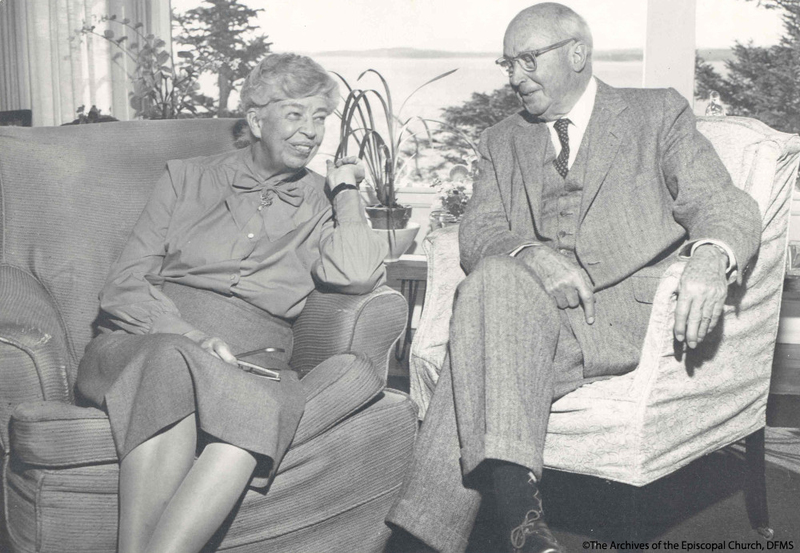Leadership Gallery
The Right Reverend William Scarlett, 1883-1973
We seek a world in which is recognized the principle of equality of opportunity for all peoples, without discrimination because of race or color. Through the ages this has been a basic principle of religion; the unity of all mankind in God, a unity based not on our race or color or class but on our common humanity.
- William Scarlett
William Scarlett was born in Columbus, Ohio. He graduated from Harvard University in 1905 and later attended the Episcopal Theological School in Cambridge, Massachusetts, receiving his degree four years later. In 1911 he was called to become dean of Trinity Cathedral in Phoenix, Arizona, a position he held for eleven years. Scarlett began his service as dean of Christ Cathedral in St. Louis in 1922 until his election as bishop coadjutor of Missouri eight years later and bishop in 1933.
As Bishop of Missouri and a tireless crusader for social reform, Scarlett committed the resources of the diocese to helping those left jobless and homeless by the Great Depression. In 1935 the Episcopal City Mission was created to minister to those in the city’s jails. He also revitalized Christian education in the congregations, recognizing that the future of the Church was at stake.
Known as a liberal clergyman, Scarlett championed the idea of church unity and wanted cooperation among all denominations. He was one of the founders of the St. Louis Chapter of the Conference of Christians and Jews and was invited to share ownership of St. Luke’s Hospital with the Presbyterians. As president of the Urban League of St. Louis for sixteen years, he sought to make his community aware of problems in race relations. While on the national board of the Urban League and American Civil Liberties Union, Scarlett advocated for the equal rights of Black people long before the issue was addressed by the institutional church. He retired in 1952 and was succeeded by Bishop Lichtenberger.
His personal papers are located at The Archives of the Episcopal Church. [Sources]



